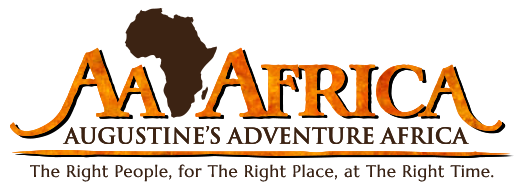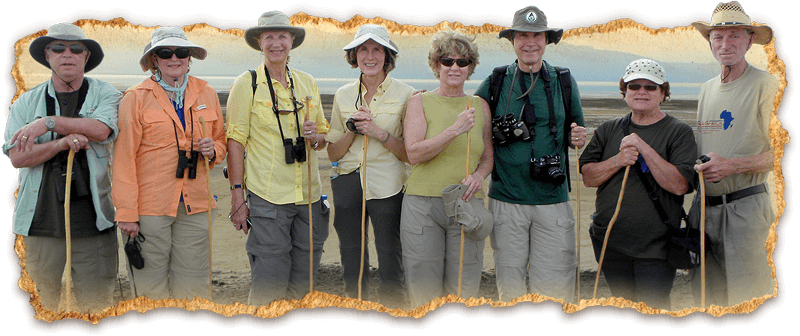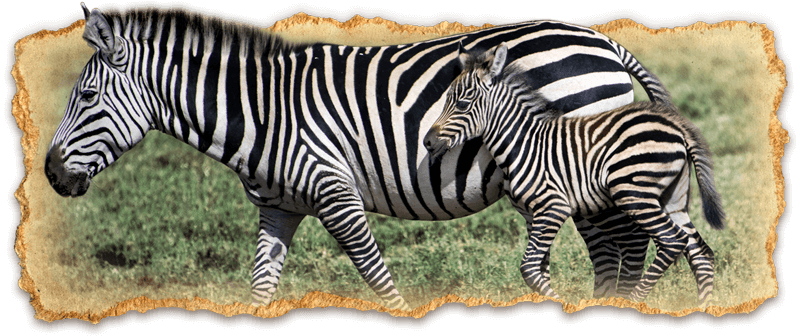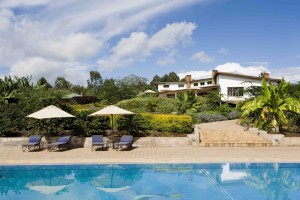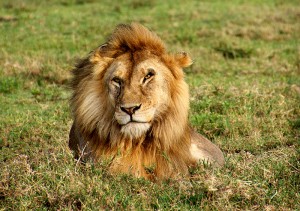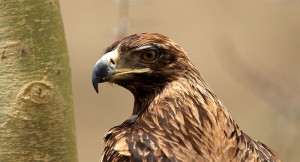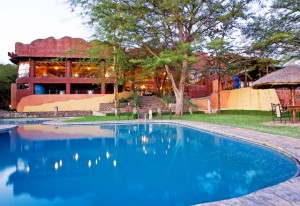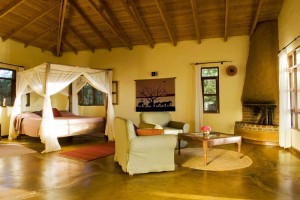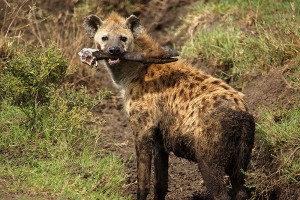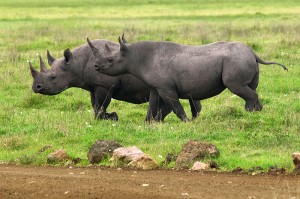Hiking Escape
The best seasons for this departure are January—March and July—October
Safari Overview
If exploring the unknown awakens your inner child or if you’re just wild about being outdoors and soaking in the world around you, treat yourself to AA Africa’s Hiking Escape where there is no limit to your own adventure.
read more
.... “Get lost” in our exciting forest walks at the bases of Mount Meru and Mount Kilimanjaro, where you’ll experience a menagerie of wildlife and lush vegetation including birds, primates, big cats, buffalo, antelope, and elephants. Discover history at the Olduvai Gorge Museum all the way to the Zinj Site, and visit the local town of Karatu where local cultural immersion is a must! Reward yourself with day hikes up to the tranquil Maundi Crater and a trek through the woodland foliage of the Ngorongoro Highland Forest. In the Lake Eyasi Basin, escape time and get acquainted with the hunter-gather Hadzabe and the pastoralist/blacksmith Datoga peoples of the area. Marvel at the myriads of birds and wild beasts on the Lake Manyara, Mount Kilimanjaro, and Serengeti National Parks’ game drives and walking safaris offered, where you can see thousands of birds, elephants, big cats, buffalo, wildebeests, antelope, zebras, giraffes, crocs, black rhinos, baboons and all kinds of other primates. There is no better time to experience first-hand the wonder, splendor, and vast array of glorious terrain and endangered creatures Africa inhabits!
10 days
9 nights
- Safari Highlights:
- Enjoy a day hike and picnic on the lush lower slopes of Mount Meru, and spectacular game drive around Momela Lakes.
- Day hike and picnic on Mount Kilimanjaro’s fertile lower slopes and up to Maundi Crater, resting at Mandara Hut.
- Wondrous walking safari, picnic, and game drive in Lake Manyara National Park.
- Timeless local cultural experience in the Lake Eyasi Basin visiting “Hunter Gatherers” Hadzabe people on their morning hunting routine and watch the pastoralist Datoga people and their blacksmith skills.
- Enjoy an afternoon hike in the beautiful Ngorongoro Highland Forest.
- Touch and see history at the Olduvai Gorge Museum and take a hike down to the Zinj Site.
- Soak in a full-day tour of the Ngorongoro Crater and uncountable wildlife before going home.
Itinerary
AA Africa’s Hiking Escape: Where There Is No Limit To Your Own Adventure
Day 1
Arrive in Arusha, Tanzania
You will arrive at Kilimanjaro International Airport (JRO) by your international flight. Your driver guide will meet you at you at the airport and drive you to Kibo Palace Hotel (or similar) for dinner and overnight (Bed & Breakfast).
About Kibo Palace Hotel
Day 2
Mount Meru
After breakfast, drive to Arusha National Park with picnic lunch for hiking on the lower slopes of Mount Meru. In the afternoon, go on a game drive around Momela Lakes. Dinner and overnight will be at Kibo Palace Hotel (or similar).
About Mount Meru (Arusha National Park)
Day 3
Mount Kilimanjaro
After an early breakfast, drive to Marangu Gate in Kilimanjaro National Park for a day hike on the lower slopes of Mount Kilimanjaro with picnic lunch. Those who are able can hike to Mandara Hut (2,700m). There is an optional hike to Maundi Crater (2,780m; 45 minutes) or you may rest upon arrival at Mandara Hut. Late afternoon, return to Arusha. Dinner and overnight will be Kibo Palace Hotel (or similar).
About Mount Kilimanjaro (Kilimanjaro National Park)
Day 4
Lake Manyara National Park
After breakfast, drive to Lake Manyara National Park for a walking safari guided by an Armed Ranger. At noon, enjoy a picnic lunch and continue with a short afternoon game drive. Late afternoon, return to your lodge for the evening. Dinner and overnight will be at Tloma Mountain Lodge (or similar).
About Lake Manyara Walking Safari
About Tloma Mountain Lodge
Day 5
Local Culture and Ngorongoro Highland Forest
After an early breakfast, you will be driven to Lake Eyasi Basin to walk with the “Hunter Gatherers,” Hadzabe people as they go for their morning hunting routine. Mid-morning, visit the Datoga people and learn about their blacksmith skills. At noon, you will return to your lodge for a late lunch. At 4:00 PM, you will go for a hike on the lower slopes of Ngorongoro Highlands Forest. Dinner and overnight will be at Tloma Mountain Lodge (or similar).
About Local Culture
About Ngorongoro Highlands Forest
Day 6
Serengeti National Park
In the morning, we’ll drive onward to Serengeti National Park. In the afternoon, enjoy your picnic lunch, upon the checkpoint at the Serengeti entrance gate. Following lunch, proceed to Serengeti Sopa Lodge, doing a game drive en route. Dinner and overnight will be at Serengeti Sopa Lodge (or similar).
About Serengeti National Park
About Serengeti Sopa Lodge
Day 7
Game Drives in the Serengeti
Enjoy a full-day of game drives in Serengeti National Park. Overnight will be at Serengeti Sopa Lodge (or similar).
Day 8
Oduvai Gorge Museum and a Hike to the Zinj
After an early breakfast, you will travel to Olduvai Gorge and hike down to the Zinj site. In the afternoon, you’ll be driven to Karatu. Dinner and overnight will be at Ngorongoro Farm House Valley (or similar).
About Olduvai Gorge Museum
About the Zinj Site
About Ngorongoro Farm House Valley
Day 9
Ngorongoro Crater
Enjoy a full-day Crater tour with a picnic lunch. Dinner and overnight will be at Ngorongoro Farm House Valley (or similar).
About Ngorongoro Crater
Day 10
Return to Arusha
After breakfast, return to Arusha for lunch and a dayroom at Kibo Palace Hotel (or similar). In the evening, transfer to Kilimanjaro International Airport (JRO) for your international flight back home.
- Inclusions:
- Respective accommodations or similar throughout as indicated.
- All meals on main tour as shown (except day 1 at Bed & Breakfast).
- All game drives with photographic roof hatch land cruiser driven by a professional driver guide.
- All transfers as per the itinerary.
- Complimentary bottled water during game drives.
- Tips to waiters.
- All national park entry fees and Olduvai Gorge Museum entry fee.
- Visit to Maasai Village.
- Exclusions:
- Entry VISA and local airport tax.
- Personal and baggage insurance.
- International flight/excess baggage charges levied by airline.
- Meals other than specified.
- Tips to your driver guide.
- Tips to your local village guide.
- Tips to porters.
- Cost for anything not mentioned on the list above.
Accommodations
Our Special Interest Hiking Safari Features Deluxe Accommodations
Kibo Palace Hotel - Arusha
Named after the highest peak of Africa’s highest mountain – Mt Kilimanjaro, Kibo Palace Hotel is one of Arusha’s most exciting and innovative luxury hotels; contemporary, conductive and unconventional, a luxury hotel with a new attitude. Located in the heart of Arusha, gateway to the world’s most renowned game parks, it is a 45-minute drive from Kilimanjaro International Airport (JRO) and a 15-minute walk from Arusha city center and the Arusha International Conference Center. [learn more]
Tloma Lodge - Karatu (and Near Ngorongoro Area)
Tloma Lodge is an exclusive petite 36-cottage lodge situated within the Ngorongoro Highlands Area. Featuring 36 spacious rooms of various bedding (28 twins, 4 kings, 4 triples, 4 interconnected rooms). All rooms have views to Ngorongoro Highlands, large beds, a private veranda, scenic walkways, telephones, en-suite bathrooms with built in showers, and mosquito nets. [learn more]
Serengeti Sopa Lodge - Serengeti National Park
Located on the edge of the escarpment overlooking the plains of the south-western Serengeti National Park, home to many thousands of wild and rare animals. There are 4 very spacious double storey suites (with lounge area, dining, and balcony facing the Serengeti Plains) and 69 standard rooms, all with 2 queen size beds, carpeted, and tastefully furnished with local fabrics and pictures. Amenities include a lounge area with a mini bar and verandah facing the vast Serengeti plains extending as far as the naked eye can see. [learn more]
Ngorongoro Farm House - Karatu (and Near Ngorongoro Area)
Ngorongoro Farm House is a small, exclusive lodge facing the Oldeani Volcano. It nestles in a 500 acre coffee farm, located just 4 km from the Lolduare entrance to the Ngorongoro Conservation Area. Featuring 52 Large Double-chalet Rooms. Of the Standard Rooms there are 25 twins, 17 doubles (king bed), 7 triples, 6 interconected rooms, en-suite bathrooms with built in showers, and mosquito nets. Of the Suite Rooms there are 3 doubles (king bed). All Rooms have large beds, a private verandah, walkways, and telephones. [learn more]
Named after the highest peak of Africa’s highest mountain – Mt Kilimanjaro, Kibo Palace Hotel is one of Arusha’s most exciting and innovative luxury hotels; contemporary, conductive and unconventional, a luxury hotel with a new attitude. Located in the heart of Arusha, gateway to the world’s most renowned game parks, it is a 45-minute drive from Kilimanjaro International Airport (JRO) and a 15-minute walk from Arusha city center and the Arusha International Conference Center. [learn more]
Tloma Lodge - Karatu (and Near Ngorongoro Area)
Tloma Lodge is an exclusive petite 36-cottage lodge situated within the Ngorongoro Highlands Area. Featuring 36 spacious rooms of various bedding (28 twins, 4 kings, 4 triples, 4 interconnected rooms). All rooms have views to Ngorongoro Highlands, large beds, a private veranda, scenic walkways, telephones, en-suite bathrooms with built in showers, and mosquito nets. [learn more]
Serengeti Sopa Lodge - Serengeti National Park
Located on the edge of the escarpment overlooking the plains of the south-western Serengeti National Park, home to many thousands of wild and rare animals. There are 4 very spacious double storey suites (with lounge area, dining, and balcony facing the Serengeti Plains) and 69 standard rooms, all with 2 queen size beds, carpeted, and tastefully furnished with local fabrics and pictures. Amenities include a lounge area with a mini bar and verandah facing the vast Serengeti plains extending as far as the naked eye can see. [learn more]
Ngorongoro Farm House - Karatu (and Near Ngorongoro Area)
Ngorongoro Farm House is a small, exclusive lodge facing the Oldeani Volcano. It nestles in a 500 acre coffee farm, located just 4 km from the Lolduare entrance to the Ngorongoro Conservation Area. Featuring 52 Large Double-chalet Rooms. Of the Standard Rooms there are 25 twins, 17 doubles (king bed), 7 triples, 6 interconected rooms, en-suite bathrooms with built in showers, and mosquito nets. Of the Suite Rooms there are 3 doubles (king bed). All Rooms have large beds, a private verandah, walkways, and telephones. [learn more]
Destinations
AA Africa’s Hiking Escape: Where There Is No Limit To Your Own Adventure
Mount Meru (Arusha National Park)
Arusha National Park is a multi-faceted jewel often overlooked by Safari goers, despite offering the opportunity to explore a beguiling diversity of habitats within a few hours. Lying between the peaks of Mt. Kilimanjaro and Mt. Meru, Arusha National Park is an outstandingly beautiful area.
There are three distinct areas that are found within Arusha National Park, namely Ngurdoto Crater, the Momella Lakes and the rugged Mt. Meru. The vegetation which occurs in the Park is correlated to the altitude and geology of the area. Ngurdoto Crater is surrounded by forest, whilst the crater floor is a swampy area. The Momella Lakes (like many in the Rift Valley) are alkaline, and their shallows sometimes tinged pink with thousands of flamingos; the lakes support a rich selection of resident and migrant waterfowl.
Hiking Mount Kilimanjaro’s Lower Slopes
Marangu Gate
Marangu Gate is the entrance to Kilimanjaro National Park, one of the most favored places to explore in Tanzania. The Marangu Route climb is considered the least arduous, yet the most popular hiking route in Africa.
Mandara Hut
From Marangu Gate, climbers ascend through a fascinating rain forest. Beyond the rain forest is a clearing that consists of a group of wooden A-framed huts—the landing at Mandara Hut. This is typically the first overnight for trekkers who wish to ascend the whole of Mt. Kilimanjaro. Relax for a bit here, as water is piped into the camp from springs above and there are flush toilets behind the main hut.
Maundi Crater
Depending on the pace of your group and weather conditions, the Marangu Route will take about 3-5 hours to the Mandara Hut checkpoint where a short hike will then take you to the Maundi Crater Rim (approx. 45 minutes). For the best views of the rim, the weather has to be clear; on clear days you’ll have magnificent views which stretch all the way to Kenya as the rim is close to the Northern border.
On Foot at Lake Manyara
Walking Safari in Lake Manyara National Park provides an opportunity to stretch and explore nature at your finger tips. The Armed Ranger who guides this walk will take you across the ground water forest which is home to varieties of wildlife including Blue monkeys, Vervet monkeys, baboons, waterbuck, and bushbucks to mention a few. Forest and woodland birds can also be seen on foot. The trail along the lake will also provide a chance to see large flocks of flamingos, herds of giraffes, cape buffaloes and impalas. This is a unique opportunity to explore nature closely outside of the vehicle.
The Hadzabe People
The Hadzabe people or Tindiga is the only Hunter Gatherers tribe that live in Lake Eyasi Basin adjacent Ngorongoro Conservation Area in Northern Tanzania. They are believed to be the descendant of the South Africa click speakers Bush Men. They neither grow crops nor raise livestock. Their living depends on hunting, collecting fruits and digging for roots. Their life style has not changed over the last several hundred years. [learn more]
The Datoga People
Datoga tribe are originally from Southern Sudan and Western Ethiopia. They are believed to have moved in Central Tanzania Area probably about 3000 years ago. They also live in the Arid Area near Mt.Hanang in North Central Tanzania. In Lake Eyasi basin they moved in about 150 years ago to look for better grazing land. They are semi-nomadic people mostly depending on livestock keeping, small scale farming as well as using their blacksmith skills to make a living. Maasai people call them Mang’ati which means respected Enemy. [learn more]
Hiking Ngorongoro Highlands Forest
Nature walking in the Highlands Forest of Ngorongoro Conservation Area provides an opportunity to stretch and explore nature at your fingertips. The highlands forest is a vital source of water for wildlife in the Crater and the surrounding village areas. Hiking and nature walking in the pristine northern highlands forest reserve offer the opportunity to explore the nature closely outside of the vehicle. The interested attractions within the Ngorongoro pristine forest trail include the Elephant Caves and Endoro Waterfalls. [learn more]
Serengeti National Park
Tanzania’s oldest and most popular national park, also a World Heritage Site and also proclaimed a Worldwide Wonder, the Serengeti is famed for its annual migration, when some two million hooves pound the open plains, as more than 200,000 zebra and 300,000 Thomson’s gazelle join the wildebeest’s trek for fresh grazing. Yet even when the migration is quiet, the Serengeti offers arguably the most scintillating game-viewing in Africa: great herds of buffalo, smaller groups of elephant and giraffes, and hundreds upon hundreds of eland, topi, kongoni, impala and Grant's gazelle.
The spectacle of predators versus prey dominates Tanzania's greatest park. Golden–mained lion prides feast on the abundance of plain grazers. Solitary leopards haunt the Acacia trees lining the Seronera River, while high densities of cheetahs prowling the southeastern plains. Almost uniquely, all three African jackal species occur here, alongside the Spotted hyena and a host of more elusive small predators, ranging from the insectivorous aardwolf to the beautiful serval cat.
But there is more to Serengeti than large mammals. 500–plus bird species, ranging from the outsized ostrich and bizarre secretary bird of the open grass-land, to the Black eagles that soar effortlessly above the Lobo Hills.
Laetoli is found west of Ngorongoro Crater. It is here where hominid footprints are preserved in volcanic rock 3.6 million years old and represent some of the earliest signs of mankind in the world. Excavation, mainly by the archaeologists Louis and Mary Leakey, yielded four different kinds of hominid, showing a gradual increase in brain size and in the complexity of their stone tools. The first skull of Zinjanthropus, commonly known as the "Nutcracker Man”, who lived about 1.75 million years ago was found here. [learn more]
A Hike Down to the Zinj Site
Oldupai Gorge is the world well known "Cradle of Mankind" where the most famous of the early human fossils Australopithecus boisei was found by Dr.Louis and Mary Leakey. It is a nearly complete cranium of an adult male; the fossil is still referred to today as "Zinj", in reference to its original name, Zinjanthropus boisei. [learn more]
Ngorongoro Crater
The Ngorongoro Crater is only 3% of the total area of Ngorongoro Conservation Area (NCA), but it is home to more than 75% of all the game animals found in NCA. Technically known as a caldera, Ngorongoro crater is the largest unflooded and unbroken caldera in the world with 19.2 km in diameter, 2000 feet deep, and 102 sq miles in area. The rich pasture and permanent water of the crater floor supports a large resident population of wildlife of up to 25,000 predominantly grazing animals. These include wildebeest, zebra, buffalo, kongoni, gazelle, warthog and eland. The swamps and forest provide additional resources for hippo, elephant, waterbuck, reedbuck, and bushbuck, baboons and Vervet monkeys. The steep inner slopes provide habitat for dik-dik and the rare Mountain reedbuck.
Jackals thrive in the crater and bat-eared foxes live in the short grass area. Predatory animals such as lion, leopard, cheetah and serval cats live off the abundant wildlife; and large packs of hyenas roam the crater, making their own kills and scavenging from others. The crater is a dynamic and constantly changing ecosystem and the numbers and proportion of some animals including lions and Black rhinos have fluctuated considerably over the past 30 years. Thanks to anti-poaching patrols in the crater and the whole ecosystem, the Black rhino population is coming back. Ngorongoro crater is one of the few places in East Africa where visitors can see a rhino. [learn more]
Arusha National Park is a multi-faceted jewel often overlooked by Safari goers, despite offering the opportunity to explore a beguiling diversity of habitats within a few hours. Lying between the peaks of Mt. Kilimanjaro and Mt. Meru, Arusha National Park is an outstandingly beautiful area.
There are three distinct areas that are found within Arusha National Park, namely Ngurdoto Crater, the Momella Lakes and the rugged Mt. Meru. The vegetation which occurs in the Park is correlated to the altitude and geology of the area. Ngurdoto Crater is surrounded by forest, whilst the crater floor is a swampy area. The Momella Lakes (like many in the Rift Valley) are alkaline, and their shallows sometimes tinged pink with thousands of flamingos; the lakes support a rich selection of resident and migrant waterfowl.
Hiking Mount Kilimanjaro’s Lower Slopes
Marangu Gate
Marangu Gate is the entrance to Kilimanjaro National Park, one of the most favored places to explore in Tanzania. The Marangu Route climb is considered the least arduous, yet the most popular hiking route in Africa.
Mandara Hut
From Marangu Gate, climbers ascend through a fascinating rain forest. Beyond the rain forest is a clearing that consists of a group of wooden A-framed huts—the landing at Mandara Hut. This is typically the first overnight for trekkers who wish to ascend the whole of Mt. Kilimanjaro. Relax for a bit here, as water is piped into the camp from springs above and there are flush toilets behind the main hut.
Maundi Crater
Depending on the pace of your group and weather conditions, the Marangu Route will take about 3-5 hours to the Mandara Hut checkpoint where a short hike will then take you to the Maundi Crater Rim (approx. 45 minutes). For the best views of the rim, the weather has to be clear; on clear days you’ll have magnificent views which stretch all the way to Kenya as the rim is close to the Northern border.
On Foot at Lake Manyara
Walking Safari in Lake Manyara National Park provides an opportunity to stretch and explore nature at your finger tips. The Armed Ranger who guides this walk will take you across the ground water forest which is home to varieties of wildlife including Blue monkeys, Vervet monkeys, baboons, waterbuck, and bushbucks to mention a few. Forest and woodland birds can also be seen on foot. The trail along the lake will also provide a chance to see large flocks of flamingos, herds of giraffes, cape buffaloes and impalas. This is a unique opportunity to explore nature closely outside of the vehicle.
The Hadzabe People
The Hadzabe people or Tindiga is the only Hunter Gatherers tribe that live in Lake Eyasi Basin adjacent Ngorongoro Conservation Area in Northern Tanzania. They are believed to be the descendant of the South Africa click speakers Bush Men. They neither grow crops nor raise livestock. Their living depends on hunting, collecting fruits and digging for roots. Their life style has not changed over the last several hundred years. [learn more]
The Datoga People
Datoga tribe are originally from Southern Sudan and Western Ethiopia. They are believed to have moved in Central Tanzania Area probably about 3000 years ago. They also live in the Arid Area near Mt.Hanang in North Central Tanzania. In Lake Eyasi basin they moved in about 150 years ago to look for better grazing land. They are semi-nomadic people mostly depending on livestock keeping, small scale farming as well as using their blacksmith skills to make a living. Maasai people call them Mang’ati which means respected Enemy. [learn more]
Hiking Ngorongoro Highlands Forest
Nature walking in the Highlands Forest of Ngorongoro Conservation Area provides an opportunity to stretch and explore nature at your fingertips. The highlands forest is a vital source of water for wildlife in the Crater and the surrounding village areas. Hiking and nature walking in the pristine northern highlands forest reserve offer the opportunity to explore the nature closely outside of the vehicle. The interested attractions within the Ngorongoro pristine forest trail include the Elephant Caves and Endoro Waterfalls. [learn more]
Serengeti National Park
Tanzania’s oldest and most popular national park, also a World Heritage Site and also proclaimed a Worldwide Wonder, the Serengeti is famed for its annual migration, when some two million hooves pound the open plains, as more than 200,000 zebra and 300,000 Thomson’s gazelle join the wildebeest’s trek for fresh grazing. Yet even when the migration is quiet, the Serengeti offers arguably the most scintillating game-viewing in Africa: great herds of buffalo, smaller groups of elephant and giraffes, and hundreds upon hundreds of eland, topi, kongoni, impala and Grant's gazelle.
The spectacle of predators versus prey dominates Tanzania's greatest park. Golden–mained lion prides feast on the abundance of plain grazers. Solitary leopards haunt the Acacia trees lining the Seronera River, while high densities of cheetahs prowling the southeastern plains. Almost uniquely, all three African jackal species occur here, alongside the Spotted hyena and a host of more elusive small predators, ranging from the insectivorous aardwolf to the beautiful serval cat.
But there is more to Serengeti than large mammals. 500–plus bird species, ranging from the outsized ostrich and bizarre secretary bird of the open grass-land, to the Black eagles that soar effortlessly above the Lobo Hills.
- Location: 335km (208 miles) from Arusha, stretching north to Kenya and bordering Lake Victoria to the west
- What to do: Hot-air balloon safaris, game viewing. Visit neighbouring Lake Victoria, Olduvai Gorge
- Best seasons to visit:
- December–June to see the wildebeest migration
- June–October to see resident animals and predators (however, mid-March/April is the peak of the rain season)
- Learn more
Laetoli is found west of Ngorongoro Crater. It is here where hominid footprints are preserved in volcanic rock 3.6 million years old and represent some of the earliest signs of mankind in the world. Excavation, mainly by the archaeologists Louis and Mary Leakey, yielded four different kinds of hominid, showing a gradual increase in brain size and in the complexity of their stone tools. The first skull of Zinjanthropus, commonly known as the "Nutcracker Man”, who lived about 1.75 million years ago was found here. [learn more]
A Hike Down to the Zinj Site
Oldupai Gorge is the world well known "Cradle of Mankind" where the most famous of the early human fossils Australopithecus boisei was found by Dr.Louis and Mary Leakey. It is a nearly complete cranium of an adult male; the fossil is still referred to today as "Zinj", in reference to its original name, Zinjanthropus boisei. [learn more]
Ngorongoro Crater
The Ngorongoro Crater is only 3% of the total area of Ngorongoro Conservation Area (NCA), but it is home to more than 75% of all the game animals found in NCA. Technically known as a caldera, Ngorongoro crater is the largest unflooded and unbroken caldera in the world with 19.2 km in diameter, 2000 feet deep, and 102 sq miles in area. The rich pasture and permanent water of the crater floor supports a large resident population of wildlife of up to 25,000 predominantly grazing animals. These include wildebeest, zebra, buffalo, kongoni, gazelle, warthog and eland. The swamps and forest provide additional resources for hippo, elephant, waterbuck, reedbuck, and bushbuck, baboons and Vervet monkeys. The steep inner slopes provide habitat for dik-dik and the rare Mountain reedbuck.
Jackals thrive in the crater and bat-eared foxes live in the short grass area. Predatory animals such as lion, leopard, cheetah and serval cats live off the abundant wildlife; and large packs of hyenas roam the crater, making their own kills and scavenging from others. The crater is a dynamic and constantly changing ecosystem and the numbers and proportion of some animals including lions and Black rhinos have fluctuated considerably over the past 30 years. Thanks to anti-poaching patrols in the crater and the whole ecosystem, the Black rhino population is coming back. Ngorongoro crater is one of the few places in East Africa where visitors can see a rhino. [learn more]
Yes, I'm interested!
Have questions? Ready to book? Drop us a line and we'll get right back with you!
Use this form to book the Special Interest Hiking Escape.
You may customize a Signature Safari Itinerary to your liking, or simply design an itinerary from scratch!
